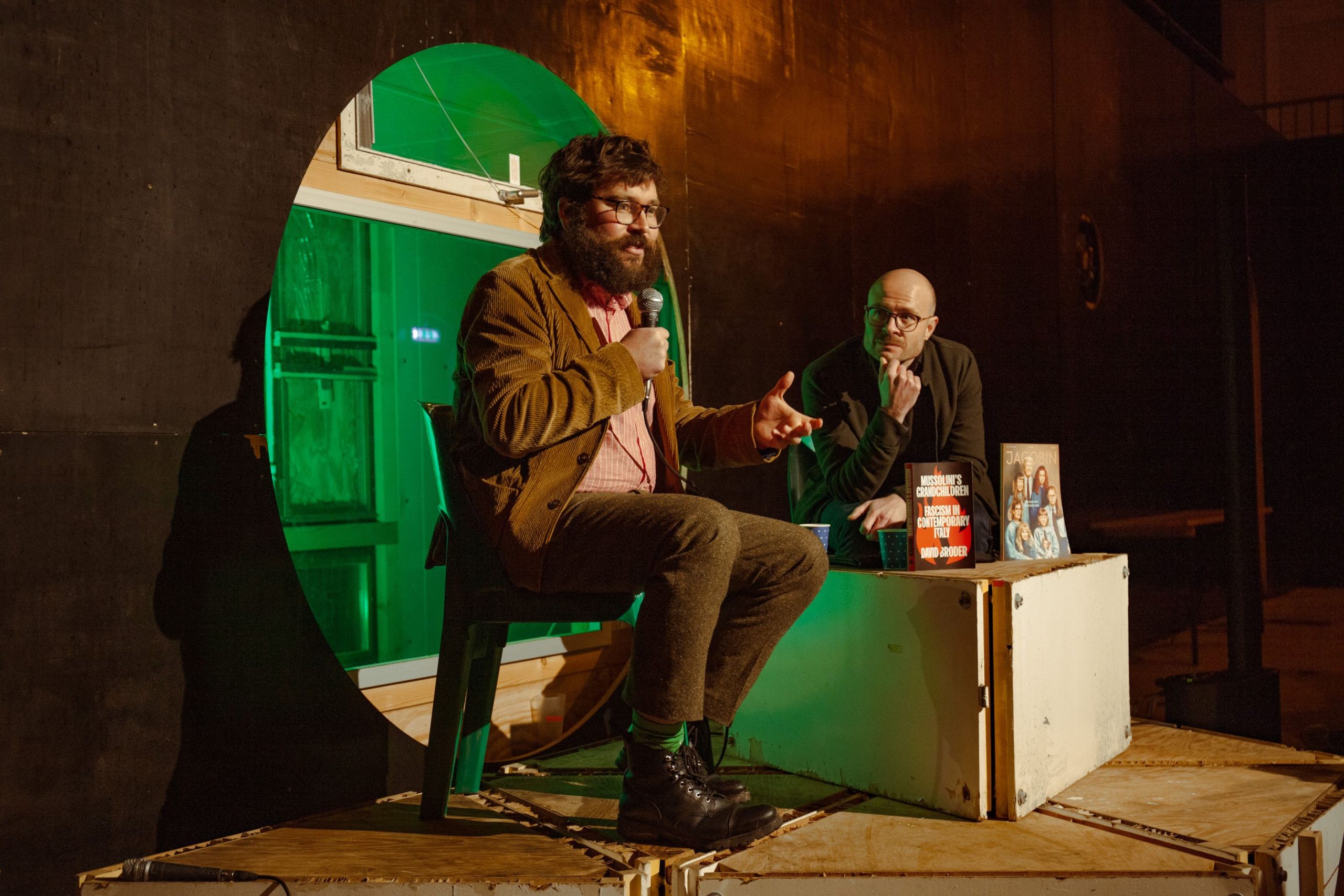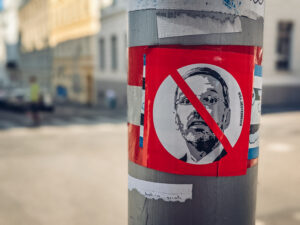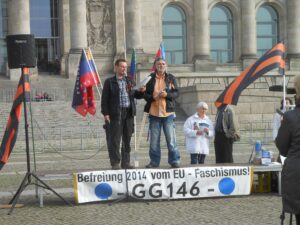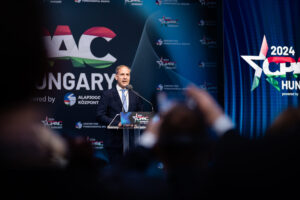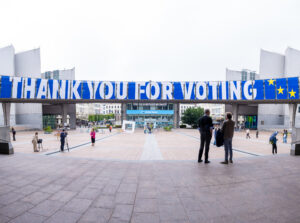Interview by Antifascist Europe
In September of last year, Italy’s Fratelli d’Italia party, considered the successor to Benito Mussolini’s Fascist party, gained political power. British historian and Jacobin editor David Broder recently published a new book on contemporary Italian fascists. Antifascist Europe interviewed David to discuss how Mussolini’s descendants are back in power and how this will affect the far-right in Europe.

David, this is your third book about Italy. The first was about the far-right Lega party, and the second was about the Communists. Why did you decide to write your new book about contemporary fascism in Italy?
My interest in Italy initially stemmed from studying the antifascist resistance during WWII, which brought me to the country in 2011. I ended up living there for most of the past decade, during which I began writing about contemporary Italian politics, including the rise of the eclectically populist Five Star Movement and the far-right Lega.
Even back then, when the Lega was on the rise, there were similar discussions about the far-right in Italy: “Oh is it really such a threat?” At the time, Fratelli d’Italia was a relatively new and weak party, but it has gained significant influence. The rise of the Lega in the mid-2010s only further increased the far-right’s reach in Italy. The rise of Fratelli d’Italia coincides with a culture war surrounding identity politics that has also involved more openly fascist groups. However, I believe that the success of Fratelli d’Italia’s leader Giorgia Meloni is not solely due to her savvy political skills or a sudden upsurge. Rather, she has taken the lead in a process that has been ongoing for 30 years. Starting with the democratic crisis of the early 1990s and the rise of Silvio Berlusconi, the so-called center-right has incorporated fascist elements and the post-fascist party. What’s new today is that the post-fascist party now holds the hegemonic position within the coalition.
It’s frustrating that the international media only seems to care about Italy during election season when they focus on the supposed threat of populism and far-right insurgents – often pointing to Italy’s history as the birthplace of fascism. However, I think this perspective misses the bigger picture. In Italy, we’ve seen a gradual rehabilitation of the far-right, including groups with explicit ties to fascism that were never fully eradicated after WWII. Rather than treating the far-right as a sudden and insurgent threat, it’s important to recognize that it has become a persistent and increasingly mainstream presence in Italian politics.
I’ve observed a concerning trend in Italian politics where the far-right has gradually rehabilitated itself over time. This trend is linked to a general impoverishment of Italian democracy, lower levels of political mobilization, and social conflict – all of which have weakened the left and created a fertile ground for the far-right to grow.
When I’ve written about this in the past, such as in an article I had in the New York Times, there has been pushback from those who accuse me of exaggerating the threat and calling them fascists. But what I’m actually saying is more nuanced: there has been a hybridization of the fascist tradition that was upheld in the post-WWII decades by the Movimento Sociale (MSI). This hybridization involves a merging of different right-wing forces, both within Italy and internationally, as well as the adoption of new ideas and talking points.
Of course, the fascist tradition has always been syncretic, as was the post-war MSI. Today it’s merging with other kinds of conservative and right-wing forces, as we see also internationally. For example, the Great Replacement theory, which is not a concept from a specifically fascist background but has many overlaps with its ethnic conception of politics, has become a glue for different right-wing forces obsessed with civilizational decline, cultural Marxism, financiers, and Soros, these kinds of things. This is just one example of how the far-right in Italy is evolving and adapting to current trends rather than simply regurgitating old fascist rhetoric.
So the title of my book, Mussolini’s Grandchildren, is to reflect precisely the fact that it’s a continuity of the fascist tradition, but it’s also evolved over time. And for example, the kind of political world in which Giorgia Meloni operates isn’t the same as in 1945, but that doesn’t mean that they’re totally different things.
David, for us as antifascists, the correct use of terms is very important. Do you think it is right to call Meloni’s party fascist? Should we use the terms “post-fascist” or “neo-fascist”?
I want to preface my remarks by saying that I am hesitant to call her a populist or else use more general identifiers to avoid the issue. That definition expects precisely nothing. The difference in the Italian case is the actual organizational continuity with fascism. The MSI was a party created by veterans from the Salò Republic; they even excluded the fascists who had dumped Benito Mussolini in the summer of 1943. From early on it took up the slogan: “We want to neither restore nor renege on the regime.” So they have this idea which is like of course Mussolini’s gone, fascism now doesn’t have a point of unity in a single leader, but they continue to uphold the fascist movement, the political culture which isn’t just violence or oppression or antisemitism or even mass mobilization, but it’s also an intellectual and political culture, even a community of activists as they would say.
Meloni is the heir to that tradition, but in times of much lesser social violence and conflict, she does not openly identify as fascist in the manner of the MSI. So when I say post-fascist, I mean that they claim to have transcended fascism. This term was used explicitly by the MSI leader Gianfranco Fini in the 1990s when the party turned into Alleanza Nazionale. He said: “We, like all Italians, are post-fascists.” Even Ignazio La Russa, who’s the president of the Senate, said this recently, “We are all the heirs to Mussolini.”
So what they’re actually trying to do is to pacify the historical fascist-antifascist conflict and to present themselves as ordinary patriots and conservatives. They’re trying to present themselves as like they’ve transcended fascism or rather that it is a thing of the past. Yet as I show, that relies on a very restrictive idea of what fascism is. Because basically, they’re saying: “Well, the regime has been consigned to history.” But they haven’t actually broken with the tradition of the MSI, which they continue to celebrate, they continue to in particular, through their obsessive martyrology. They say that the so-called antifascist republic after World War II was an oppressive power system in which basically communists were hegemonic, even despite the Christian Democrat governments, and it was a way of criminalizing and crushing fascists. And they obsessively celebrate these so-called martyrs, these fascist militants who were killed during the years of lead. But they strip the word “fascism” out of the picture. Moreover, in the Fratelli d’Italia era, this tradition of the MSI has also become much more straightforwardly right-wing, in the sense that it no longer claims to transcend left and right or to be a kind of social tradition opposed to both capitalism and communism, such as was one element of the MSI tradition.
Fratelli d’Italia is a far-right political party with a post-fascist ideology, meaning that while it is rooted in historical fascism, it neither accepts being criticized on those grounds nor meaningfully criticizes or breaks from that history. Instead, the party tries to present themselves and fascists of the past as victims and has shifted from celebrating fascist heroes, such as Mussolini, who sought to build a new Roman Empire, to celebrating fascist victims. So they’re trying to bind the idea of fascists as a victimized minority in post-war Italy, with that of Italians themselves being a victimized nationality, both by Tito’s partisans and communists and now also by Soros and the Great Replacement and so on.
How do you make a difference between far-right and fascist?
Well, the distinction between far-right and post-fascist is that, for example, the Lega is also far-right but doesn’t come from a fascist origin. I refer to groups like CasaPound, Lealtà Azione, and Casaggì as neo-fascist because they openly define themselves as such. For the same reason, I consider the post-war MSI as neo-fascist as well.
Post-fascism, as I understand it, refers to the hybridization of fascist and neo-fascist ideologies with broader right-wing views. This concept of hybridization was introduced by Roger Griffin in the 1990s when the MSI became Alleanza Nazionale. The goal is to mix the fascist and neo-fascist traditions into a broader right-wing space without discarding or destroying them. This results in the persistence of typically fascist ideas, such as the state organizing the homogeneity of the nation based on ethnicity and culture. Moreover, this ideology has a version of World War II history that somehow justifies or humanizes fascism without openly celebrating it.
In the end, however, the Lega’s interpretation of World War II history has become more similar to that of Fratelli d’Italia over time. So, this fusion, this hybridization of right-wing currents, goes beyond Fratelli d’Italia simply merging with the center-right by moderating itself and abandoning its own past. Specifically, fascist elements have become more prevalent across the entire right-wing spectrum. Even politicians like Antonio Tajani, the Italian foreign minister from Berlusconi’s party, have made comments like “Mussolini did good things too.” In Italy, discussing national identity and 20th-century history inevitably requires taking a stance on events that are directly tied to fascism.
In my book, I argue that the MSI was firm in its belief that fascism did not die in 1945 and that its political culture persisted. However, Meloni’s approach of regarding fascism as something confined to the past dismisses this issue entirely. It implies that fascism is just a regime in the past, with no relation to the present.
It appears that up to this point, Meloni’s political focus has been on national memory and ideology. Did she bring any tangible changes to Italian politics that aligned with fascist tendencies?
It’s a long-term process, and it’s not limited to the current government alone. Over the past 30 years, the right has gradually dominated discussions about national identity, migration, and other related topics. The right has become more anti-democratic and certainly very focused on all these issues, as expressed in the idea that the Italian people are under threat of extinction. That’s why one of the initial actions taken by Meloni’s government was to rename several ministries. For instance, the Ministry of Equality was renamed the Ministry of Equality, Families, and Birth Rates.
In 2017, the Democratic-led government introduced a specific crime of torture. So, of course, many of the acts related to torture, like physical violence, were already illegal. But this was a law that made torture as such illegal. And Fratelli d’Italia, at the time, said, well, this is stopping police doing their job; they’re just our boys trying to protect us. In March, the European Court on Human Rights issued a report on torture in Italian prisons. And Fratelli d’Italia responded by announcing that they were going to remove the 2017 law on torture. What they’re actually doing is just introducing a series of steps that will make state officials less accountable and protests and social opposition gradually limited and suppressed in various ways.
Take another example. There was this shipwreck on the coast of Steccato di Cutro in Calabria on the 26th of February, and 89 people died. Interior minister Matteo Piantedosi said even if migrants are desperate, it’s senseless to put children at risk by trying to cross the sea. Meloni basically refused to comment on it for several days. Then eventually, they held a cabinet meeting in the town. She refused to meet the families of the victims, but instead, they held Lega leader Matteo Salvini’s birthday party there. Then a few days later, she did meet the families, and her question was: “Didn’t you know the risks?”. Meloni frequently made statements such as, “The left is accusing me of causing the death of migrants, which is ridiculous because I am a mother myself.” While she is not directly responsible for these deaths, her far-right views contribute to a larger culture that allows for such tragedies to occur without consequence. And indeed, there was an NGO that tried to inform the Italian coast guard about another boat’s drowning. And then the coast guard just hung off the phone and ignored them.
In addition to their promise of a naval blockade in the Mediterranean, the Fratelli d’Italia party has also pledged to introduce a law that would ban apologism for communist and Islamist totalitarianism, as well as shut down NGOs. While this may not be a complete attack on democracy, it is an attempt to undermine the antifascist legacy and create a political and constitutional environment that suppresses their opponents, including center-left parties who may be hesitant to defend far-left groups.
In addition to the fascist parties, Italy has a huge number of far-right groups and think tanks. How does the relationship between these two types of organizations develop?
There is a politician named Roberto Jonghi Lavarini who has been promoting the idea that small neo-fascist groups should join mainstream right-wing parties and run for office. He calls himself the Black Baron and has associated with Milan football ultras at a social center called Cuore Nero or Black Heart. He ran as a candidate for Silvio Berlusconi’s party, Forza Italia, and later for Fratelli d’Italia in 2018. A documentary by Fanpage in 2021 shows him involved in organizing the Fratelli d’Italia election campaign for the Milan city elections, including footage of him making fascist salutes with Carlo Fidanza, the head of Fratelli d’Italia in the European Parliament. There is a video of Roberto Jonghi Lavarini and Daniela Santanchè, the current tourism minister, in which they are discussing a book in a restaurant in Milan. In the video, Jonghi Lavarini states that their struggle is a racial one.
Another recording by Fanpage has Jonghi Lavarini claiming that neofascists can get jobs thanks to more mainstream right-wingers: that where the institutional right is in power, “the guys in the offices are all Nazis” While this may be an exaggeration, there is some truth that they are handing out such posts.. This also owes to a certain division of labor: the institutional right-wing parties run for election but have few activists by historical standards and volatile voters who often switch between them. Meanwhile, some neo-fascist groups are trying to create an embedded community outreach group similar to left-wing social centers. Lealtà Azione organized a football event entitled Let’s Kick Out Pedophilia. The neo-fascist groups are attempting to maintain grassroots activity similar to social movements, by promoting fascist memory culture through things like cleaning the graves of soldiers from the Salò Republic.
Election parties like the Lega also rely on this kind of militants. It’s alarming to hear about these far-right groups being integrated into the institutional right and given positions of power within local government as councilors. Verona had a mayor from the Lega party, followed by a mayor from the Fratelli d’Italia party between 2007 and 2022. And also, there is a group called Veneto Fronte Skinhead and a Neo-Nazi band called Gesta Bellica. And one of the members was integrated into the list for the local council of the city. Then one of the founders of the Veneto Fronte Skinhead group was appointed as the director of the public waste management company in Verona, which is a significant role as it involves managing the largest municipal services. However, he has since been arrested and implicated in a major corruption case.
While the far-right infiltrating military and police may pose a greater danger, there is still a relationship between the democratically elected right-wing parties and militant groups in Italy. It’s not just a matter of the parties moderating or channeling these groups into democratic politics, but rather that they actively support and enable them. For example, when Gianni Alemanno, a former fascist who was the mayor of Rome, attempted to buy a building illegally occupied by the far-right group CasaPound and give it to them.
The Italian case is not unique in the sense that we see similar dynamics in other European countries as well. The boundary between centrist and far-right parties is becoming increasingly blurred. However, it is important to note that this process is not always one-sided, as some centrist parties have also shifted to the right. What do you think is happening in the context of pan-European politics?
Anything that becomes more hegemonic and influential inherently becomes more central in the sense that it pulls the overall political spectrum towards itself. So, of course, the general European discourse on migration — and not only discourse, but a policy of repression of migration — has over the last decade continually moved towards a more explicitly civilizational and repressive model. Even if the far-right parties are not in power, their mobilization and activism can still have an impact on policies and political discourse. They can shape public opinion and push mainstream parties to adopt more right-wing positions, which can ultimately lead to policies that align with their own agenda. So, even from the opposition, the far-right is able to influence political discourse and policies. The way in which the barrier between far-right and center-right parties breaks down is not unique to Italy, but there, it is more advanced. Fratelli d’Italia and other far-right parties do not have to renounce their fascist past in order to be accepted within the broader right-wing movement. There are, nonetheless, certainly tensions within that, for instance, over the different parties’ relations with Russia and Putin.
It’s important to note that when far-right groups become mainstream, it doesn’t necessarily just mean that they themselves have changed. Rather, it’s often due to the actions of others who may have normalized or legitimized their views. For example, in 2019, former Italian Prime Minister Silvio Berlusconi claimed credit for constitutionalizing and legitimizing the fascists in Italy. He didn’t shy away from using the term “fascists” to describe his own allies rather than masking their views with terms like “national conservatives.” This shows that mainstreaming of far-right groups can be a deliberate and calculated political strategy by those in power.
Before the war in Ukraine, many far-right parties in Europe were openly friends with Russia, like Berlusconi or Matteo Salvini. How will the war in Ukraine affect the European far-right?
There is a conference called National Conservatism which unites much of the right. The edition held in Rome in 2020 brought together right-wing British Tories and US Republicans, Southern European post-fascists, and indeed each of the main Italian right-wing parties, Viktor Orbán, Law and Justice from Poland, and Marion Maréchal from France. Much of the funding comes from institutions supported by the Hungarian government. Some of those forces were more or less pro-Putin. Lega even made a formal alliance with United Russia, and Forza Italia MP Lucio Malan was one of the observers of the 2014 referendum in the Donbas, and now he’s a Fratelli d’Italia senator. He was actually at the Natcon in Brussels in 2022.
The far-right is trying to create a big family of hard-right movements under the banner of European Christian identity, which they claim is being threatened by communists and progressive NGOs such as those supported by Soros. They use the victim identity of countries that have been under communism for a long time, such as Hungary, to evoke emotion and gain support from other countries that may not have the same history as Soviet tanks. This creates an emotional bond between these groups and helps to merge them together.
In 2021, Polish Prime Minister Mateusz Morawiecki held a conference in Warsaw to formally create a pan-European hard-right group, which it was said could be the second biggest in the European Parliament. But the invasion of Ukraine has put a halt to these efforts. Poland and Hungary, which had the rule of law problems and were sanctioned by the EU, became the focus of European politics, and Morawiecki was legitimized as a strong Western ally. It seems like Meloni has also benefited from the shift towards Atlanticism because she is in the same group as Morawiecki, known as European Conservatives and Reformists. This focus on Atlanticism has seemingly made other issues irrelevant. Where around 2016, many liberals identified Russia’s support for “fascists” abroad, the specific discredit of being on the far right has been somehow detached from the issue of association with Putin, in the sense that this latter is the real litmus test.
So, in this sense I believe that the momentum of the “Atlanticist” far-right has been boosted by the Russian invasion of Ukraine,and this also favours improved relations between the European People’s Party (EPP) and the European Conservatives and Reformists (ECR). This has led to a new idea in Italy that a so-called center-right coalition should govern Europe, particularly in the European Commission. For years, there has been a grand coalition of Christian Democratic and center-left groups, but now the idea is to have the EPP and ECR. The aim is first to build a broad far-right bloc, like the Morawiecki strategy, to become the second largest group and then form a union with more established center-right forces from the Christian-Democratic tradition. This could then hope to rule the EU much as the joint forces of the right govern Italy.
In March 2022, the National Conservative conference was held in Brussels, right after the invasion of Ukraine. Everyone at the conference was in agreement to support Ukraine against Russia, with the belief that Ukraine is fighting for all of us. However, parties like Lega and the French far-right party Rassemblement National were absent on this occasion. Perhaps their position will change, but currently, there surely is a split over this within the right. But more generally, we can also point to convergences: both the center-right and far-right are re-composing with a new language and talking points centered around the decline of Europe and the West and a communist or “cultural Marxist” threat. So it in many ways echoes historic fascist talking points, but also comes together, for example, in Great Replacement Theory, Camp of the Saints, this kind of stuff, which is not literally from the fascist tradition but provides a way of talking about this obsession with civilizational decline. Fratelli d’Italia is a party that claims financiers, Marxists, and Muslims are conspiring with globalist institutions to erase Italian identity and make them slaves to finance capital. But in reality, their proposed solutions are limited to being represented in NATO and the European Union. They are not advocating for the overthrow of the existing world but rather a longer battle for hegemony to promote their ideas.
There’s been a shift in leadership within the right-wing coalition in Italy, with Fratelli d’Italia emerging as the apparent far-right leader. However, their voter base is actually the most reluctant to support Ukraine militarily, according to polls. Fratelli d’Italia has committed so much to supporting Ukraine that any economic fallout from the war could lead to dissatisfaction among its supporters. It sounds like Fratelli d’Italia is trying to position itself as a reliable and responsible member of the Euro-Atlantic community, despite Italy not really being a major military power in the conflict. This could be seen as a way to demonstrate its credibility and leadership potential, especially since it has not held the reins of government before. Meanwhile, Lega and Forza Italia have been more cautious and critical. Berlusconi issued a very crude attack on Zelensky, claiming that he caused the war and this kind of thing. if Meloni had been recorded saying that, she probably had to resign. Guido Crosetto, the defense minister, has attempted to link the issue of migrants with a stance against Russia, claiming that the Wagner group is sending migrants across the Mediterranean to undermine the Italian government.
In some countries like Estonia or Poland, the policy of unqualified and total support for Ukraine is popular and hegemonic. However, in Germany, the far right may be better able to exploit popular dissatisfaction with the economic fallout from the war than the left. It’s unpredictable how the fallout will play out, but the left is in a poor position in basically every country. The far right may benefit from this war in some countries for sure.
There is a theory that the far-right is creating a Reactionary International in Europe. Do you like that term? What is the ultimate aim of this association?
Reactionary International is a good term. I think the concept of being “reactionary” is useful because, unlike historical fascist movements, it does not have a grandiose and utopian vision for creating a new world. Instead, it seeks to preserve something that may have never truly existed. However, it’s reactive in the sense that it’s attempting to resist or push back against something.
I think what they are planning for, ultimately, is a general confrontation between the West and China. It seems to me that Fratelli d’Italia’s goal is not to make Italy a world power as Fascism imagined, or really even a second-rate power of the level of Germany, France, and Britain. Instead, they believe that Western civilization is in decline and needs protection and that they are a more or less junior ally in the Western camp. They see themselves as a kind of a last guard defense against the destruction of Italy and Italianness.
On a European level, they don’t want to leave the EU but rather reshape it as an alliance of nation-states. The idea of a Europe of strong nations or fatherlands is not just about historical influence but also about asserting national sovereignty and rejecting a more integrated and centralized European Union. This is why Meloni looks to countries like Poland and Hungary as examples, as their hard-right governments have been pushing back against EU regulations and policies that they see as infringing on their national sovereignty.
The long-term aim of the far-right is to make Europe like Italy, where the whole space from right-wing Christian Democrats to parties derived from fascism is just one big continuum. That’s exactly what they want to do. Because in Italy they won first.
Could you provide a more comprehensive explanation of why the far-right has gained momentum on a global scale?
The collapse of the USSR was an important factor in the rise of the far-right, as it caused an often fatal crisis of the communist parties and the mass organizational and social promise they carried forth. This collapse was itself a result of economic changes in Western countries that weakened the Keynesian project, which was also linked to the global economic crisis, including the debt crisis in eastern countries. On an ideological level, the demonization of communism and the acceptance of anti-communism as a framing for politics — after the Berlin Wall had actually fallen — is one of the things that helped the far-right to become more accepted as part of democracy, but also part of potential parties of government and so on for its discourse to become more mainstream.
So part of the reason for the success of the far-right is due to the weakening of the left. Of course, if we look at countries like Italy in particular, then it’s because the left’s social base has crumbled. The so-called right-wing coalition as a whole is winning. Yet their vote is also declining over time, just less quickly than that of the left. The success and breakthrough of the far-right is very much to do with the collapse of the forces that once restrained them, like when there were attempts to bring the far-right into the so-called area of government in Italy in the 1950s and then in Fernando Tambroni’s abortive MSI-supported Christian Democratic cabinet in 1960. That met with a massive workers’ movement backlash — and indeed, the mass antifascism of the time wasn’t just a reaction against fascists but was also a movement able to hold out a real promise to the labor movement, the socialist horizon of the future, and so on.
The global rise of the far-right is, moreover, linked to a broader process of the West’s relative decline. This is why identity politics has become increasingly important in right-wing movements. Anti-communism is still a factor, but it is also directed against other things like so-called cultural Marxism, feminism, LGBTQ issues, and Islam, which is seen as a factor for rising social demands on taxpayers and the state. The idea is that Muslim migration means more people to support, which can strain welfare resources — a literal “proletariat” of immigrants who are “breeding” while Italians are, Meloni claims, going extinct. In this sense, it’s important to recognize that anti-communism isn’t just a fake, hysterical response absent of any real Communist Parties. It’s actually a reaction to social changes that really do embody demands and causes that are typical of the left. There is a material basis for this opposition.
What do we have to do as antifascists? We’re small, we’re weak, and we’re losing this war.
The antifascism of the post-war decades was, of course, rooted in the World War Two fight against fascism and for national liberation. Yet at the same time, it wasn’t just a memory or celebration but was also linked to a more expansive social horizon. It provided a way of connecting workers’ demands to a broader democracy, a more participatory sense of mobilization and politics, and so on. So, antifascism, in that case, was not just about the fascists of the past or even neo-fascist groups, but also incorporated certain positive agendas for social liberation. That’s what is harder to see today.
Without a doubt, I think rearguard actions are worthwhile — for instance, it’s good for left-wing and even liberal forces in the European Parliament to oppose what the far right is doing. It was good that in March, for example, the European Parliament voted to condemn the Italian government which has banned gay couples from registering adoptions. Even just to consistently oppose them, rather than accept that they sometimes have a point or try and echo them, would be a big advance on where the mainstream centre-left is now.
That said, if the left in Italy wants to mobilize against Georgia Meloni’s agenda, they can’t simply rely on now-tired rhetoric like “fighting fascism” or “opposing the right.” Over the past 30 years, this approach has been used hypocritically, and many people have become disillusioned with it. In France, similarly, Macron has taken up many of Le Pen’s talking points while also condemning the left for not standing with him against fascism. This kind of instrumental antifascism is useless and can even be counterproductive in spreading cynicism. To rebuild its base, the left also needs to focus on material issues that matter to lower-income people, unemployed people, who are the ones who today are most likely not to vote. Even so, I think these things aren’t absolutely counterposed: it remains important to defend an antifascist culture and push back against Meloni’s attempts to promote historical and identity issues. These battles are about the values of society and what it means to be a “normal” Italian family or citizen, so they can’t be ignored in favor of some imagined set of purely economic or material issues, which they are ultimately also tied up with. Defending against fascism means setting limits and resisting these harmful ideas. There’s an element of it that actually involves physical self-defense against militant groups. But none of these things are enough. The fight clearly has both defensive, and reactive elements, and then also needs to be able to be more than that and offer the hope of real change and the means of organization that can energize millions of people.
